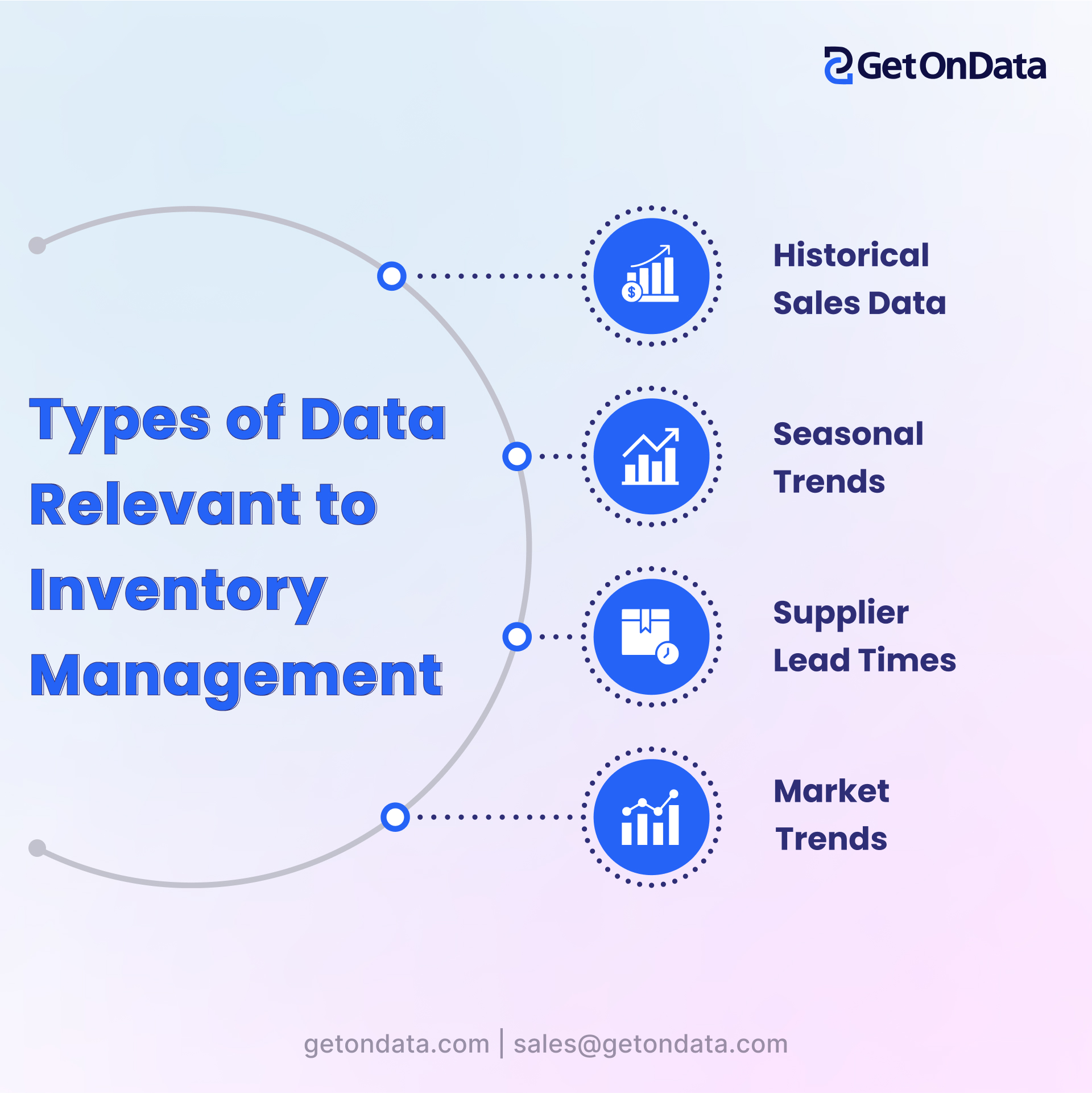|
Getting your Trinity Audio player ready... |
Inventory management is a delicate balance. Businesses must minimize stockouts, where demand exceeds supply leading to missed sales opportunities, and overstocks, where supply outpaces demand, causing costly excess inventory.
Inefficient inventory management leads to stockouts and overstocks, causing reduced customer satisfaction, lost sales, and increased storage costs. The ripple effect can also impact company profitability, brand reputation, and overall market competitiveness.
Optimal inventory management is crucial. It prevents revenue loss and ensures smooth operations, maximizes customer satisfaction, and enhances business agility. Effective inventory management analytics can differentiate between a flourishing business and one struggling to survive.
The Traditional Approach to Inventory Management
1. Traditional Methods of Inventory Management
Traditional inventory management methods have been the go-to for businesses for many years. They generally involve manual tracking, spreadsheets, and simple formulas to determine when and how much stock to reorder.

Point Technique
The reorder point technique is a traditional inventory management method that triggers stock reordering when inventory levels drop to a predetermined point.
- It’s simple to understand and easy to implement.
- Suitable for businesses with consistent demand and lead times.
- Reduces the risk of stockouts.
- Doesn’t require advanced technological tools.
- It can lead to overstocking if demand or lead time varies.
Economic Order Quantity Model
The Economic Order Quantity (EOQ) model is a technique that calculates the optimal order quantity that minimizes total inventory costs.
- This model reduces carrying costs and order costs.
- Ideal for businesses with steady demand and lead times.
- The formula takes into account demand, order cost, and carrying cost.
- Requires a deep understanding of your costs.
- Assumes constant demand and lead times, which isn’t always realistic.
ABC Analysis
ABC analysis categorizes inventory into three categories based on its importance.
- It helps prioritize inventory management efforts.
- “A” items are crucial for the business; “B” items are important but less critical; “C” items are the least critical.
- Requires fewer resources to manage “B” and “C” items.
- Does not account for changing product life cycles or market trends.
- It can be subjective and time-consuming.
2. Limitations of Traditional Inventory Management Methods
Although traditional inventory management methods have proven useful, they come with limitations.
Predictive Limitations
Traditional methods often struggle to accurately predict future demand.
- They largely rely on historical data, which might not reflect future trends.
- Unforeseen events like sudden demand surges or supply chain disruptions can render predictions useless.
- Inaccurate demand forecasts can lead to stockouts or overstocks.
- They may not account for new products or product life cycle stages.
- They often overlook market trends, competitor activities, and other external factors.
Lack of Flexibility
Traditional inventory management methods lack flexibility.
- They’re not designed to respond quickly to changes in demand or supply.
- Inventory levels can become out of sync with the market conditions.
- Manual adjustments can be time-consuming and error-prone.
- They can’t scale efficiently with business growth.
- They often require substantial manual intervention and administrative effort.
Over Reliance on Historical Data
Traditional inventory management methods rely heavily on historical data.
- Historical data may not accurately predict future demand or trends.
- They don’t account for external factors like market trends or economic fluctuations.
- They may not consider internal changes, such as business strategy or product offerings.
The Role of Data-Driven Decision Making
1. Understanding Data-Driven Decision Making
Data-Driven Decision Making (DDDM) is a systematic approach that uses data to guide strategic business decisions. It involves gathering and analyzing data relevant to business goals, enabling managers to make informed decisions that drive positive outcomes.
Role in Inventory Management
DDDM plays an instrumental role in modern inventory management.
- It provides insights into customer buying patterns, enabling businesses to predict future demand more accurately.
- It allows businesses to quickly monitor and adjust inventory levels, improving responsiveness to changing market conditions.
- It informs strategic decisions like supplier selection, pricing, and promotions, boosting overall business performance.
2. Types of Data Relevant to Inventory Management
Data is the fuel for DDDM. In inventory management, certain types of data are particularly valuable.

Historical Sales Data
Historical sales data forms the basis of demand forecasting.
- It reveals trends and patterns in sales over time.
- It provides insights into seasonal fluctuations in demand.
- It helps predict future demand, informing purchasing and stock management decisions.
Seasonal Trends
Understanding seasonal trends is crucial for effective inventory management.
- It allows businesses to anticipate changes in demand linked to the time of year or specific events.
- It enables them to adjust stock levels accordingly, preventing stockouts or overstocks.
- It helps plan marketing and promotional activities in line with expected demand.
Supplier Lead Times
Data on supplier lead times inform inventory planning.
- It enables businesses to calculate reorder points and quantities more accurately.
- It provides insights into supplier reliability, informing supplier selection.
- It helps manage the risk of stockouts due to supplier delays.
Market Trends
Data on market trends can significantly impact inventory management analytics..
- It enables businesses to anticipate changes in demand due to market growth, competition, or economic conditions.
- It informs strategic decisions like product selection, pricing, and promotion.
- It helps businesses stay competitive by keeping their product offerings relevant and appealing to customers.
3. Benefits of a Data-Driven Approach
Adopting a data-driven approach to inventory management analytics brings several benefits.
Increased Accuracy
DDDM enhances the accuracy of inventory management analytics decisions.
- It provides more precise demand forecasts, reducing the risk of stockouts or overstocks.
- It enables businesses to make decisions based on hard data, not just intuition or guesswork.
- It allows for more precise planning and allocation of resources, boosting operational efficiency.
Greater Flexibility
DDDM offers greater flexibility in inventory management.
- It enables real-time monitoring and adjustment of inventory levels, allowing businesses to respond quickly to changing market conditions.
- It supports strategic decision-making, enabling businesses to adapt their product offerings, pricing, and promotions in line with market trends.
- It promotes continuous improvement by providing data for performance tracking and analysis.
Real-Time Adaptation
Real-time adaptation is another major benefit of DDDM.
- It enables businesses to track sales and inventory levels in real-time, ensuring they always have the right stock.
- It supports quick decision-making, enabling businesses to respond promptly to sudden changes in demand or supply.
- It reduces the risk of stockouts or overstocks, improving customer satisfaction and business performance.
Implementing Data-Driven Inventory Management
1. Choosing the Right Tools: Inventory Management Analytics
The right inventory management analytics is key to implementing DDDM effectively.
Inventory management analytics helps businesses manage their inventory more effectively and efficiently. It automates routine tasks, provides real-time inventory tracking, supports accurate demand forecasting, and facilitates data analysis.
Key Features to Look For
When choosing inventory management analytics, certain features are particularly valuable.
- Real-time inventory tracking: This feature provides instant visibility into stock levels across locations, helping businesses prevent stockouts and overstocks.
- Demand forecasting: Software with this feature can analyze historical sales data and other relevant factors to predict future demand, enabling businesses to plan their inventory more accurately.
- Integration capabilities: It’s important that the software can seamlessly integrate with other business systems, like ERP and CRM, to enable a unified view of business operations and facilitate data sharing.
2. Integrating Data Analytics into Your Inventory Management
Data analytics is a key component of data-driven inventory management. To leverage data analytics, businesses must first identify and collect relevant data.
It could be sales data, customer data, or market data. Next, they should employ analytical tools or techniques to analyze this data and generate insights that inform inventory management decisions.
Predictive analytics and machine learning are advanced techniques increasingly used in inventory management.
Predictive analytics uses statistical algorithms and machine learning techniques to analyze historical data and predict future outcomes.It can greatly enhance demand forecasting, leading to more accurate inventory planning.
Machine learning, on the other hand, involves computer algorithms that improve automatically through experience, enabling more complex and nuanced analyses and predictions.
Also Read: Deciphering Market Expansion: Navigating The Future Of Market With Retail Data Analytics
3. Case Studies: Success Stories of Data-Driven Inventory Management
Company A: Overcoming Seasonal Stockouts
Company A, a clothing retailer, used to struggle with seasonal stockouts. By adopting a data-driven approach, they managed to overcome this challenge. They analyzed historical sales data to understand seasonal demand patterns, then used predictive analytics to forecast demand for different seasons. It enabled them to plan their inventory more accurately and avoid stockouts.
Company B: Reducing Overstock through Real-Time Tracking
Company B, a grocery chain, was often left with overstocked perishable goods. They implemented an inventory management analytics system that provided real-time inventory tracking. It allowed them to monitor sales and adjust stock levels, reducing overstock and waste.
Overcoming Challenges in Data-Driven Inventory Management
1. Potential Pitfalls and Solutions
Transitioning to data-driven inventory management analytics can come with certain challenges.
Data Quality and Accuracy
Poor data quality can undermine the effectiveness of data-driven decision-making.
- Businesses must ensure that their data is accurate, reliable, and relevant.
- They should implement data validation and cleaning procedures to remove errors and inconsistencies.
- It’s also important to keep data up-to-date, as outdated data can lead to inaccurate decisions.
Privacy and Security Concerns
Data-driven inventory management analytics involves collecting and analyzing large amounts of data, which can raise privacy and security concerns.
- Businesses must comply with data protection regulations and ensure that sensitive data is securely stored and transmitted.
- They should implement robust security measures, like encryption and access controls, to prevent data breaches.
- Regular security audits and staff training can further strengthen data security.
Implementing Change in Traditional Systems
Changing from traditional to data-driven inventory management analytics can be complex and disruptive.
- It requires a clear implementation plan, including objectives, timelines, and responsibilities.
- Staff must be trained and supported to adapt to new tools and practices.
- It’s important to manage resistance to change through effective communication and engagement.
2. Building a Data-Driven Culture
For data-driven inventory management analytics to succeed, businesses must build a data-driven culture.
Importance of Data Literacy
Data literacy is the ability to read, understand, and communicate data as information, a vital skill in today’s data-driven business environment.
- Fostering data literacy across the organization can democratize data access, empower employees to make informed decisions, and drive a culture of continuous learning and curiosity.
- Resources, tools, and training can help improve employee data literacy at all levels.
- Organizations should also encourage a collaborative environment where employees feel comfortable asking questions, exploring data, and sharing insights.
Training and Education for Staff
Training is crucial to fostering a data-driven culture and implementing data-driven inventory management.
- Regular training programs can help employees understand the importance of data, how to use data tools, and how to make data-informed decisions.
- Training should be tailored to different roles and levels of data literacy.
- Organizations should also consider hiring or developing data specialists to provide expert knowledge and support.
Encouraging Data-Informed Decisions
Creating a culture encouraging data-informed decisions can drive more accurate and effective inventory management.
- Leadership should set an example using data to inform their decisions and strategies.
- Employees should be encouraged to base their decisions on data rather than intuition or experience.
- Organizations can also incentivize data-informed decision-making through recognition and rewards.
Future Trends in Data-Driven Inventory Management
1. Artificial Intelligence and Machine Learning in Inventory Management
Artificial Intelligence (AI) and Machine Learning (ML) have huge potential to transform inventory management.
- AI and ML can analyze vast amounts of data quickly and accurately, providing deep insights and precise forecasts.
- They can also automate routine tasks, freeing staff to focus on strategic decision-making.
- Advanced AI systems can even make autonomous decisions, such as reordering stock when it falls below a certain level.
2. Impact of IoT (Internet of Things) on Inventory Management
The Internet of Things (IoT) is a network of physical objects—devices, vehicles, buildings, and other items—embedded with sensors and software that enable them to exchange data.
- IoT devices can track inventory in real time, providing visibility and control over stock levels.
- They can also monitor environmental conditions critical for perishable goods, such as temperature and humidity.
- With IoT, businesses can even track products in transit, improving supply chain transparency.
Conclusion
Data-driven decision-making is a powerful tool for inventory management, offering benefits such as increased accuracy, greater flexibility, and real-time adaptation. Implementing it requires choosing the right tools, integrating data analytics, and building a data-driven culture. Future trends, like AI and IoT, hold great promise for further enhancing inventory management.
In this digital transformation era, embracing a data-driven approach is beneficial and essential for staying competitive. As we move toward the future, the role of data analytics in inventory management will become increasingly utilized by providing a data-driven field characterized by deep insights, agile decisions, and efficient operations
FAQs
1: How to start transitioning to a data-driven approach?
Start by identifying the key data points that affect your inventory, then collect and analyze this data using appropriate tools and techniques. Implementing inventory management analytics can be a great first step.
2: How to ensure the accuracy of the data used in inventory management?
Accuracy can be ensured by regularly updating the data, having checks and balances for data entry, and using software that automatically synchronizes inventory data across multiple platforms.
3: Can small businesses also benefit from data-driven inventory management?
Absolutely. Small businesses can greatly benefit from a data-driven approach. It can help them understand their sales patterns, manage stock effectively, and make informed business decisions.
4: What is the role of AI and IoT in the future of inventory management?
AI and IoT hold immense potential to revolutionize inventory management. AI can enable accurate forecasting, automate routine tasks, and even make autonomous decisions, while IoT can provide real-time inventory tracking and improve supply chain transparency.
5: How to overcome resistance when implementing data-driven inventory management?
Resistance can be overcome by educating employees about the benefits of a data-driven approach, providing necessary training, and implementing changes gradually. Including employees in decision-making and addressing their concerns can facilitate acceptance.



